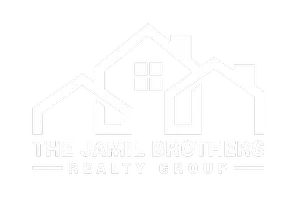Homes in Top School Districts Cost 135% More—Is It Worth It?

For many families, buying a home isn’t just about square footage or curb appeal—it’s about access to high-quality education. Across the U.S., and especially in Northern Virginia, homes in top-rated school zones carry a steep premium. Recent data shows that homes in these districts average $1.21 million, roughly 135% more than homes in nearby lower-rated zones. But is that premium justified—or is it overhyped? Let’s dive deeper into why these homes are so expensive, what buyers gain from them, and whether it makes sense for you to pay the extra cost.
Why Homes Near Top Schools Cost More
The premium attached to homes in highly rated school districts isn’t accidental—it’s the result of consistent demand and long-term value. Families consistently place school quality at the top of their home-buying priorities, and in areas with nationally recognized schools, that demand creates intense competition.
Homes near top-performing schools tend to offer three main advantages:
- Reputation: Great schools attract families looking for long-term stability. Parents often sacrifice home size or commute time just to secure a spot in the right district.
- Resale Value: Even in slower markets, homes in top-rated school zones typically hold their value and sell faster than comparable homes outside those boundaries.
- Demand: Strong buyer demand—especially from families with young children—creates bidding wars that push prices up significantly.
Another factor is limited supply. School district lines don’t expand easily, so the number of available homes in a desirable zone remains fixed. This creates a classic supply-and-demand imbalance that continues to drive prices higher year after year.
Northern Virginia Examples
In Northern Virginia, the price gap between top-rated and average-rated school districts is striking. Buyers can expect to pay a premium of hundreds of thousands of dollars for a home that falls within a coveted boundary line. For example:
- McLean & Great Falls: Homes here often average over $1.5M. Both McLean and Langley High consistently rank in the top tier for academics, test scores, and college readiness.
- Arlington: Neighborhoods such as Lyon Village and Clarendon see average home prices above $1.1M, thanks to high-performing schools and proximity to D.C.
- Nearby areas with average-rated schools: Homes in parts of Fairfax or Prince William County may sell for $600K–$700K—often half the price of homes just a few miles away in a different district.
This means families are effectively paying a six-figure premium for a school boundary line. In some cases, two nearly identical homes—built the same year and located less than five miles apart—can differ in price by $500K simply because one falls in a more desirable school district.
Is the Premium Worth It?
The answer depends on your personal and financial priorities. For families planning to stay in their home for 10+ years, buying in a top-rated school district can be one of the most rewarding investments. Your children receive access to excellent education, and you’re more likely to see strong long-term appreciation when you eventually sell.
For investors, homes in these districts are considered relatively “safe bets.” Even during slower real estate cycles, these homes attract buyers because school quality remains a non-negotiable factor for many families. As a result, they typically experience less price volatility.
However, there are trade-offs. The extra $500K–$700K spent on a home in a top school district could alternatively be invested in a less expensive home plus private schooling, extracurricular activities, or other financial assets. Some families find that this approach provides more flexibility while still ensuring their children receive a great education.
Hidden Costs and Considerations
Beyond the purchase price, living in a high-demand district can also mean higher property taxes, stricter HOA fees, and a more competitive buying process. Multiple-offer situations are common, and buyers often need to waive contingencies or stretch budgets to win. It’s important to factor these into your decision-making process.
Another consideration: schools can change. District ratings are based on test scores, demographics, and resources, all of which can shift over time. While top schools are usually consistent, no district is immune from change. Buyers should think long-term but remain flexible.
The Bottom Line
Buying in a top-rated school district is rarely just about the house—it’s about future opportunities, stability, and market demand. For many families, the peace of mind and long-term security are worth the steep premium. For others, alternative strategies like private schooling may make more sense.
What remains consistent is this: homes in Northern Virginia’s top-rated school zones are some of the most resilient investments in the market. Whether you’re prioritizing your children’s education, planning a long-term hold, or looking to maximize resale value, these homes remain a powerful option in an otherwise competitive housing landscape.
Thinking of Buying in a Top School District?
At The Jamil Brothers Realty Group, we help families and investors navigate Northern Virginia’s competitive market. From Arlington to McLean, we’ll guide you to the right home at the right value. Contact us today to get started.
FAQs
Are homes in top school districts always more expensive?
Almost always—demand from families drives prices significantly higher than in average-rated zones. In Northern Virginia, the gap can exceed 100%.
Is it better to buy a smaller home in a top school zone or a larger one elsewhere?
It depends on your priorities. Many families choose location over size for long-term value and education, while others value more space and accept an average-rated district.
Do homes in top-rated school zones resell faster?
Yes, homes in top-rated districts often sell quicker and maintain stronger resale value even in slower markets, making them a safer investment.
What if the school district boundaries change?
It’s rare, but possible. Always confirm current boundaries with the local school board before purchasing to avoid surprises.
Categories
Recent Posts










Let's Connect

